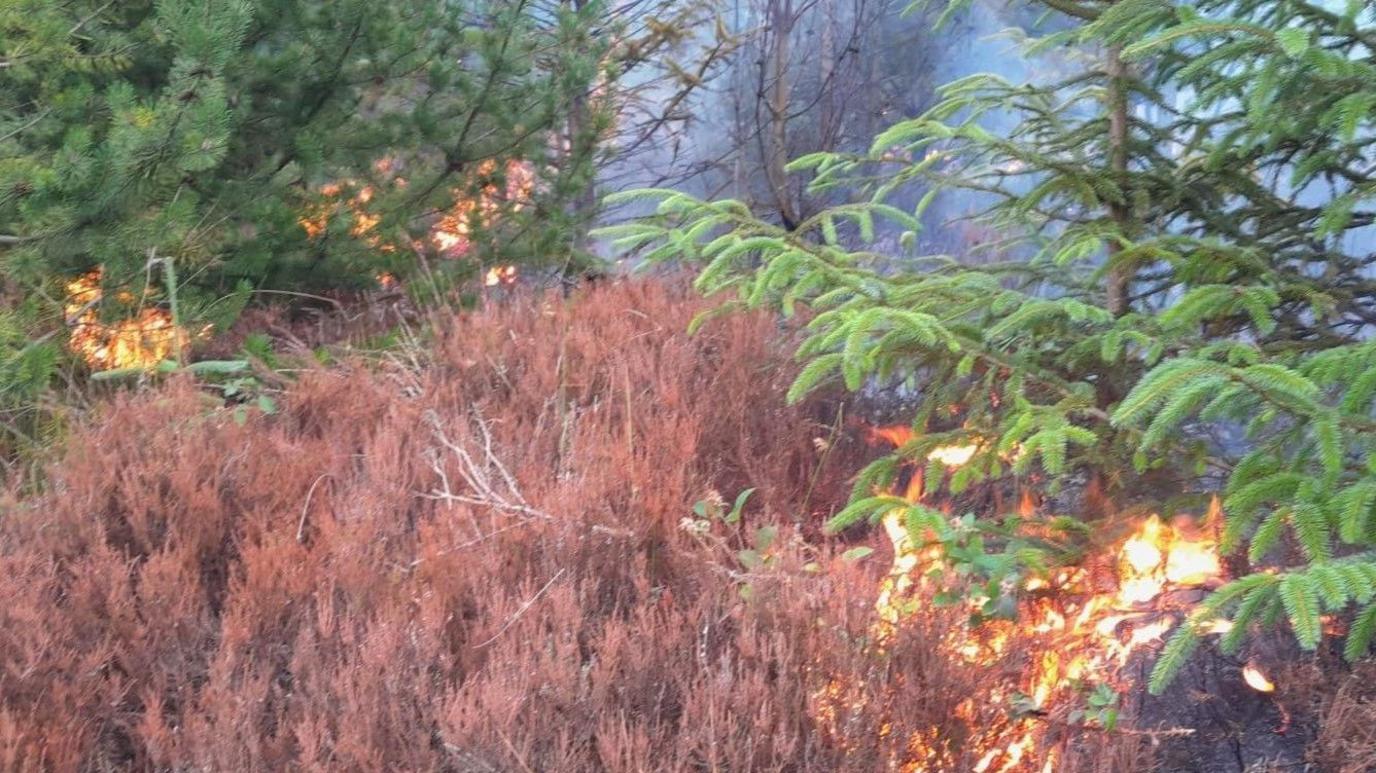'Moor could take centuries to recover from fire'
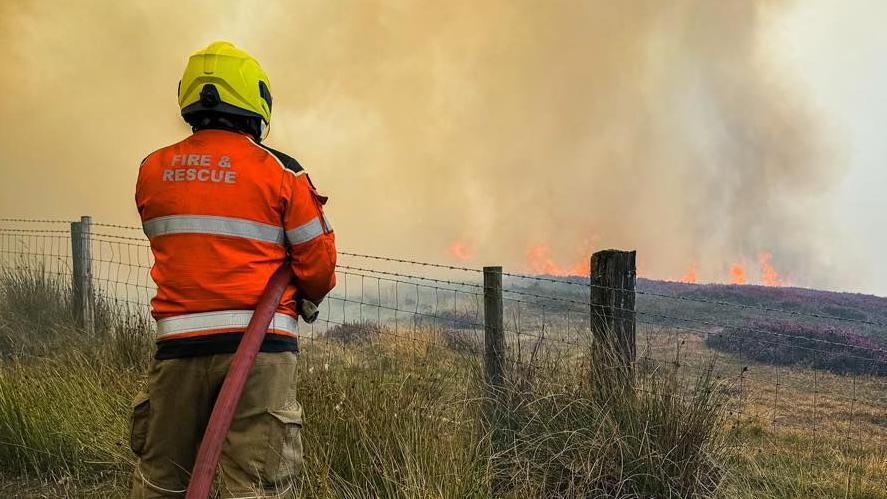
Fire crews have been fighting a blaze on the North York Moors since Monday evening
- Published
An area of moorland in North Yorkshire could take "many decades, centuries or even thousands of years" to recover from a large fire, experts have said.
Firefighters were first called to Langdale Moor near RAF Fylingdales on Monday evening, with a major incident declared on Wednesday.
On Friday evening, nine fire engines were on scene, according to North Yorkshire Fire & Rescue Service (NYFRS), with the smell of smoke reaching as far south as York, 35 miles away.
Elspeth Ingleby, from the North York Moors National Park Authority (NYMNPA), said: "It's catastrophic for the habitats that are found in that location and the wildlife that currently lives there."
The area affected covers a site of special scientific interest, a special conservation area and a special protection area, the senior ecologist said.
This included a "really, really highly designated site" for merlin, one of the smallest birds of prey in the UK.
Ms Ingleby said that as a ground-nesting species, merlin only bred within deeper heather beds, which have been protected in the area for at least 15 years.
"It really is devastating and it will take probably 10 years or more for the heather to develop to that depth again to enable them to breed in the future."
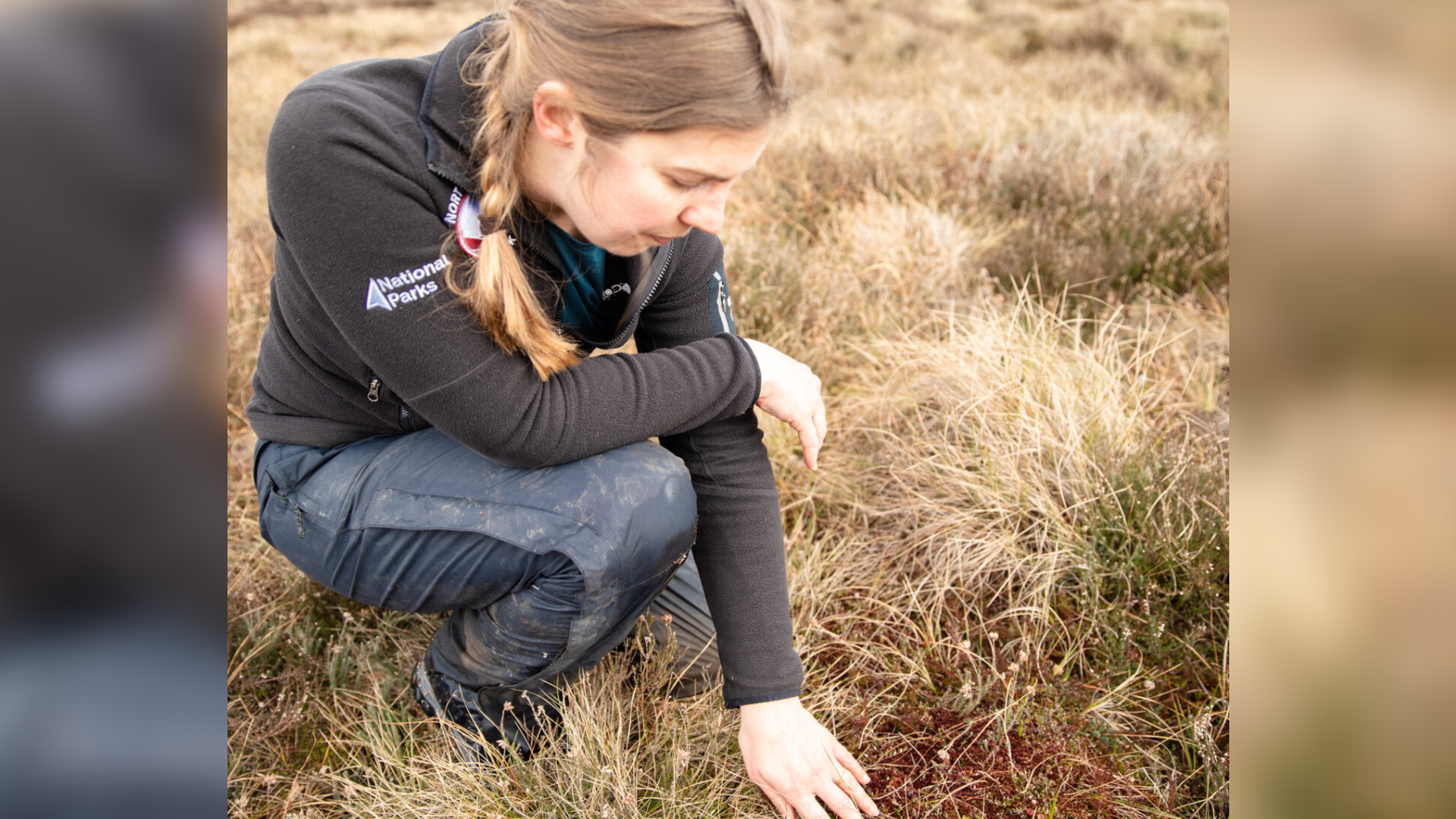
Ecologist Elspeth Ingleby said peat in the area was likely to take centuries to recover
Ms Ingleby said the wildfire could be undoing "thousands of years of peat and carbon storage", with heritage and history below the surface lost, as well as habitats above the ground.
"It can take many decades, centuries and even thousands of years to really recover from that kind of impact."
Lynden Marquis, from Yorkshire Wildlife Trust, said: "Quite a lot of the wildlife is really going to struggle to either escape the fire or deal with the consequences of what has happened to the habitat.
"Slow-moving animals, for instance field voles or lizards or snakes, are simply not going to be able to escape.
"They are going to, frankly, die in a terrible way."
Species of thrush which visit the UK during the autumn and winter would also be at risk, he said, because they normally feed on berries which grow in the area.
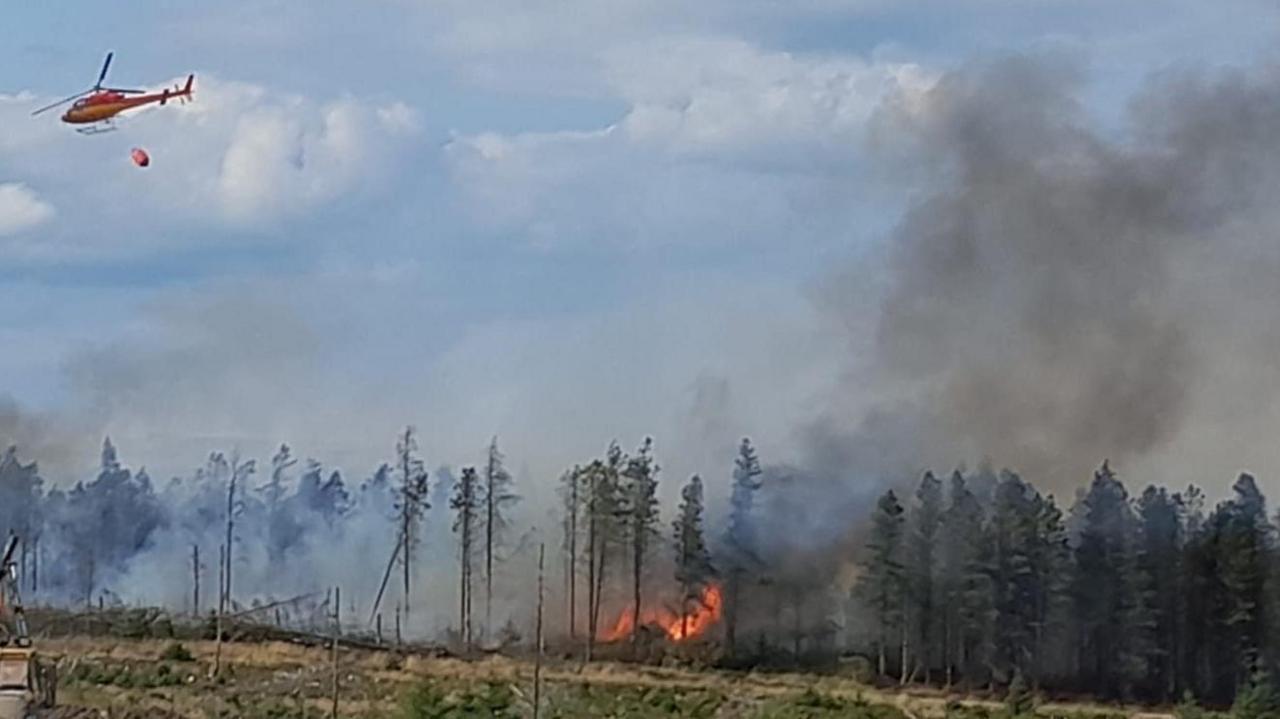
Helicopters dropped water on the fire on Thursday
Mr Marquis, who works as part of the Yorkshire Peat Partnership, said the fire would have a massive impact.
"Once that peat's gone, that peat is gone," he said.
"It's billowing up into the atmosphere as carbon, so in the long term that's going to drive climate change, and in the short term, you can't just replace peat, it forms at an average of 1mm per year."
As well as helping "really interesting wildlife" to grow, peat is used to filter drinking water for reservoirs, and mitigate flooding by slowing the flow of rainfall, he explained.
"And we need the ground wet enough that the vegetation can regrow because all of the bilberry, the heather, the sphagnum moss, some dews, they will all have just gone."
'Tinder-dry'
On Friday morning, the NYMNPA asked members of the public to "consider their actions" because of the "extreme fire risk".
In a statement, it said ground vegetation and forests were "tinder-dry, creating the perfect conditions to spread rapidly and out of control".
Visitors to the area were urged not to discard cigarettes or matches, light fires or barbecues, or leave glass bottles or reflective litter, to help "prevent catastrophe".

Emergency crews were called to a separate fire off the A171 on Thursday evening which was later brought under control
On Thursday evening, NYFRS crews were called to a separate moorland fire nearby, next to the A171, which was closed overnight near the Flask Inn.
By Friday morning, this had been brought under control with help from local farmers, who also supported firefighters working at Langdale Moor by transporting water to the scene.
At 16:00 BST on Friday, NYFRS said nine fire engines remained at Langdale Moor with a further two on the A171 near the Flask Inn.
A statement added: "We're getting a lot of calls reporting smoke in and around York. We believe this is smoke from the fire on Langdale Moor.
"If you're being impacted by the smoke we advise keeping doors and windows closed."
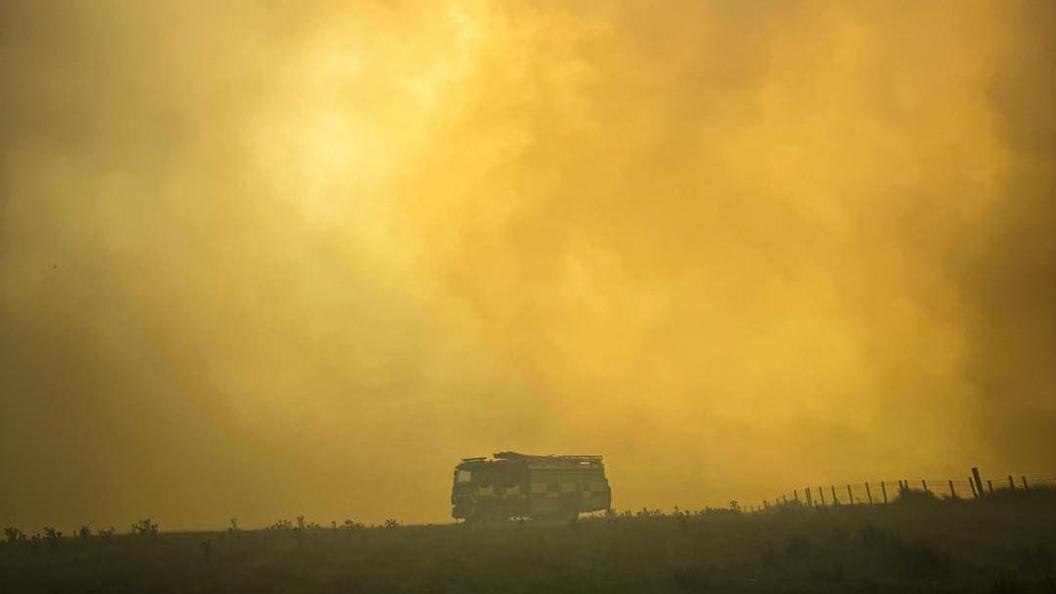
Fire crews from across North Yorkshire have been working at the two incidents
On Tuesday, steam services were suspended on the nearby North Yorkshire Moors Railway, but the heritage organisation said on Wednesday it would aim to run steam trains "between Grosmont and Whitby due to the lower fire risk profile".
Trains between Grosmont and Pickering would continue to be hauled by diesel locomotives, to reduce the potential risk of further pressure on emergency services, it confirmed.
An open day planned for Saturday at Harrogate Fire Station was cancelled because of "strain" on NYFRS, with a crew from the town assisting at Langdale Moor, the service said.
"We have tried to leave this decision as late as possible to see if we could still hold the event, but it is not possible."
A crew from Bentham, 103 miles' drive away, also supported the incident response earlier in the week.
Get in touch
Tell us which stories we should cover in Yorkshire
Listen to highlights from North Yorkshire on BBC Sounds, catch up with the latest episode of Look North.
Related topics
- Published14 August

- Published13 August
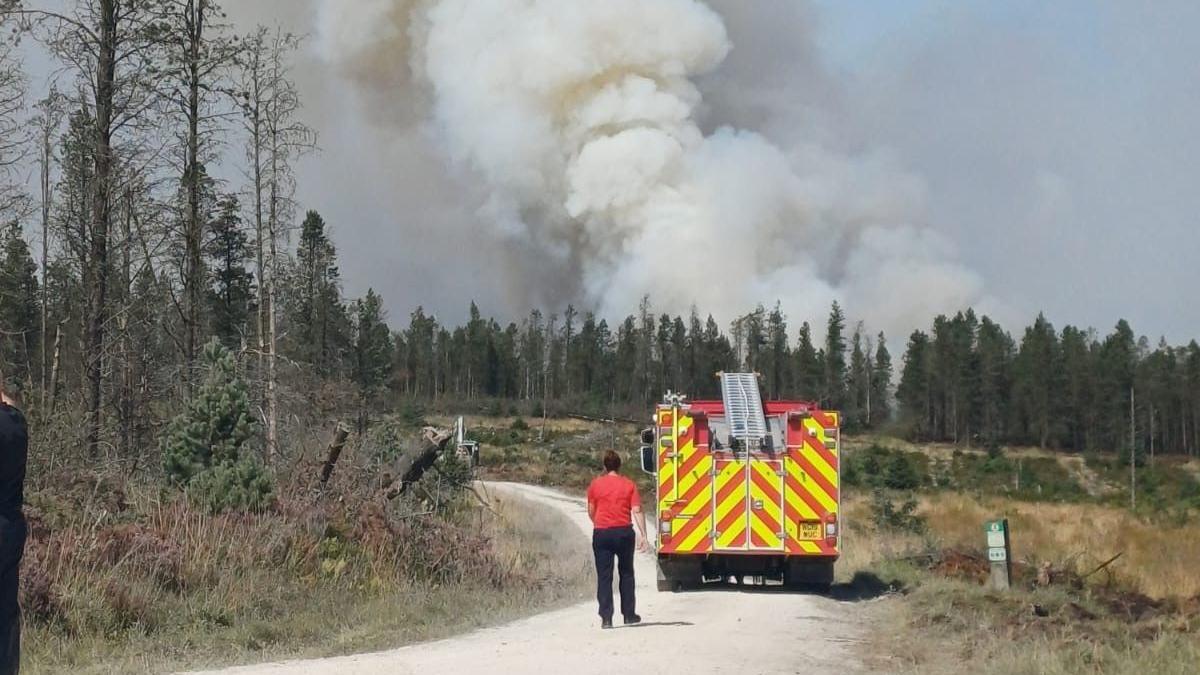
- Published12 August
